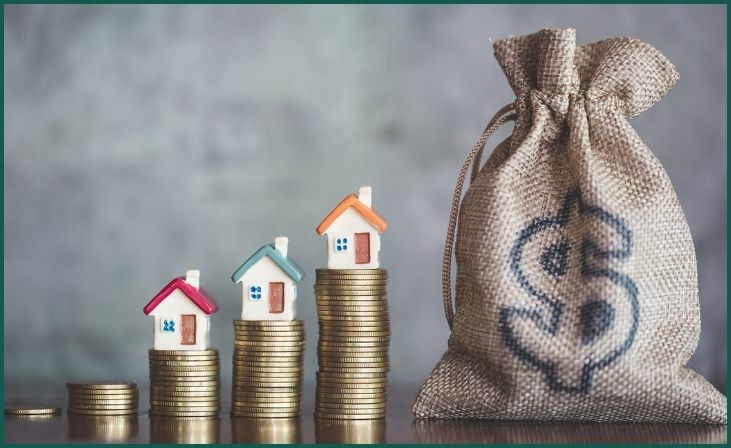The concept of the upper middle class represents a significant milestone in socioeconomic status, embodying financial stability, educational attainment, and a certain lifestyle. While the definition may vary depending on cultural, geographical, and economic factors, identifying signs of upper middle class status can provide insight into one’s societal position and aspirations. This classification encompasses individuals and families who have achieved a level of financial comfort that affords them not only the essentials but also some luxuries and opportunities for personal growth. Education and career advancement play crucial roles, as does active participation in cultural and community activities. Understanding these indicators offers a glimpse into the values, aspirations, and privileges associated with the upper middle class. This outline will delve into various signs that signify one’s attainment of upper middle class status, shedding light on the multifaceted nature of socioeconomic success in contemporary society.
Table of Contents
ToggleSigns That You Have Achieved Upper Middle Class Status
Financial Stability:

Achieving upper-middle-class status typically means having a stable income that comfortably covers living expenses while allowing for savings and investments. This stability provides a sense of security and the ability to weather financial challenges without significant stress. It may involve employment in professions such as law, medicine, engineering, or management, where salaries are above average and provide room for financial growth. Additionally, individuals in this category often have multiple sources of income, such as investments, rental properties, or side businesses, further bolstering their financial stability. Overall, financial stability is a cornerstone of upper-middle-class status, enabling individuals and families to pursue their goals and enjoy a comfortable standard of living.
Also, Read – The 7 Best Things to Buy at Trader Joe’s This December
Homeownership:
Owning a home is a significant milestone often associated with upper-middle-class status. It signifies not only a place to live but also a valuable asset that can appreciate over time, contributing to wealth accumulation. Upper-middle-class individuals typically reside in desirable neighborhoods or areas with good schools, access to amenities, and a strong sense of community. They may invest in property renovations or upgrades to enhance the value and comfort of their homes. Homeownership also offers stability and security, providing a sense of belonging and pride in one’s living space. Overall, owning a home is a key indicator of financial success and social standing in the upper-middle class.
Quality Education:

Access to quality education is highly valued among upper-middle-class families, as it is seen as essential for future success and upward mobility. This may involve enrolling children in prestigious private schools or living in neighborhoods with top-rated public schools. Upper-middle-class parents often prioritize educational opportunities and invest resources in extracurricular activities, tutoring, and college preparation to ensure their children excel academically. They may also advocate for educational reform and support initiatives that promote equal access to education for all socio-economic backgrounds. A strong emphasis on education reflects a belief in the power of knowledge and learning to open doors to future opportunities and secure a prosperous future for oneself and future generations.
Also, Read – 10 Sleep Solutions for Enhanced Rest and Relaxation
Healthcare Access:
Access to comprehensive healthcare coverage is a hallmark of upper-middle-class status, providing peace of mind and protection against unexpected medical expenses. Upper-middle-class individuals typically have employer-sponsored health insurance plans or can afford to purchase private insurance with extensive coverage. This ensures access to quality healthcare services, including preventive care, specialist consultations, and medical treatments, without significant out-of-pocket costs. In addition to traditional healthcare coverage, many in this socio-economic group invest in health savings accounts (HSAs) or flexible spending accounts (FSAs) to cover medical expenses and save for future healthcare needs. Overall, healthcare access is a fundamental component of a comfortable and secure lifestyle for those in the upper-middle class.
Don't just scroll, subscribe!
BuzzTrail's unique web-stories are the cure for boredom you've been waiting for.
Retirement Savings:

Planning for retirement is a priority for upper-middle-class individuals, who understand the importance of financial security in their later years. They actively contribute to retirement savings accounts such as 401(k)s, IRAs, or pension plans, taking advantage of employer matching contributions and tax benefits to maximize their savings potential. In addition to employer-sponsored retirement plans, they may diversify their investments through individual brokerage accounts or real estate holdings to further build wealth and ensure a comfortable retirement lifestyle. Upper-middle-class individuals often seek guidance from financial advisors to develop personalized retirement strategies and monitor their progress towards retirement goals. By prioritizing retirement savings early and consistently, they aim to enjoy financial independence and pursue their passions during their golden years.
Investments:
Diversified investment portfolios are a key strategy for building wealth and achieving financial goals in the upper-middle class. Individuals in this socio-economic group invest in a variety of assets, including stocks, bonds, mutual funds, real estate, and alternative investments, to generate passive income and hedge against market volatility. They adopt a long-term perspective and employ investment strategies tailored to their risk tolerance, financial objectives, and time horizon. Additionally, they stay informed about market trends, economic indicators, and investment opportunities to make informed decisions and optimize their portfolio performance. While there are risks associated with investing, upper-middle-class individuals understand the importance of diversification and asset allocation in mitigating risk and maximizing returns over time. By leveraging their financial resources and knowledge, they aim to build wealth and achieve financial independence for themselves and future generations.
Lifestyle Choices:

The lifestyle of upper-middle-class individuals reflects their financial security and social standing, characterized by a balance of comfort, leisure, and cultural enrichment. They have the discretionary income to enjoy travel, dining out at quality restaurants, attending concerts or theater performances, and pursuing hobbies and recreational activities that align with their interests. Upper-middle-class families may prioritize experiences over material possessions, valuing travel and cultural experiences as opportunities for personal growth and enrichment. They also invest in quality goods and services that enhance their lifestyle, such as upscale home furnishings, designer clothing, and premium entertainment systems. While they may indulge in luxury occasionally, they also prioritize financial prudence and saving for future goals, striking a balance between enjoying the present and planning for the future.
Networking and Social Capital:
Building and leveraging social capital is essential for success and advancement in the upper-middle class. Individuals in this socio-economic group cultivate extensive networks of professional contacts, friends, and acquaintances who can provide support, opportunities, and valuable connections. They participate in industry events, professional associations, alumni networks, and social gatherings to expand their social circles and stay connected with peers and influencers in their field. Networking is not just about exchanging business cards or making superficial connections but building genuine relationships based on mutual trust and respect. Upper-middle-class individuals understand the importance of reciprocity and giving back to their network, whether through mentorship, referrals, or professional advice. By investing in their social capital, they enhance their professional opportunities, access valuable resources, and strengthen their position in the community.
Generational Wealth:

Passing down wealth to future generations is a common goal among upper-middle-class families, who prioritize financial security and prosperity for their children and grandchildren. They may establish trusts, estate plans, and other wealth transfer strategies to minimize taxes and ensure a smooth transition of assets to heirs. Additionally, they provide financial support for their children’s education, homeownership, and other life milestones, setting them up for success and upward mobility. Upper-middle-class parents instill values of financial responsibility, entrepreneurship, and philanthropy in their children, preparing them to manage wealth effectively and make positive contributions to society. By building generational wealth, they aim to leave a lasting legacy and empower future generations to thrive and achieve their fullest potential.
Conclusion
In conclusion, recognizing the signs of upper middle class status provides insight into societal positioning and aspirations. While financial stability and career success are essential, it’s also crucial to acknowledge the importance of community engagement, cultural capital, and a balanced lifestyle. Achieving upper middle class status reflects not only economic prosperity but also a commitment to personal growth, social responsibility, and contributing to the greater good. By understanding these indicators, individuals can navigate their paths to success with greater clarity and purpose, fostering a more equitable and inclusive society for all.
FAQs
What defines the upper middle class?
What defines the upper middle class?
The upper middle class typically denotes a socioeconomic group above the middle class but below the wealthy elite. It’s characterized by financial stability, educational attainment, and a certain lifestyle.
What are some key indicators of upper middle class status?
What are some key indicators of upper middle class status?
Key indicators include homeownership in desirable neighborhoods, advanced degrees, stable and lucrative careers, disposable income for luxuries, participation in cultural and community activities, and financial planning for retirement.

